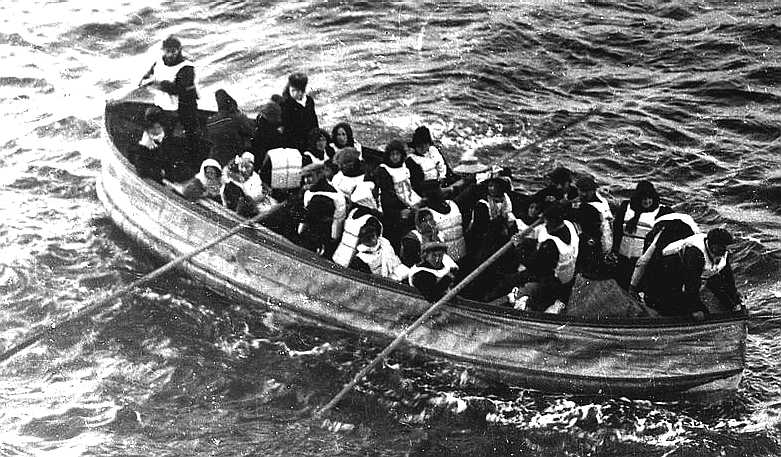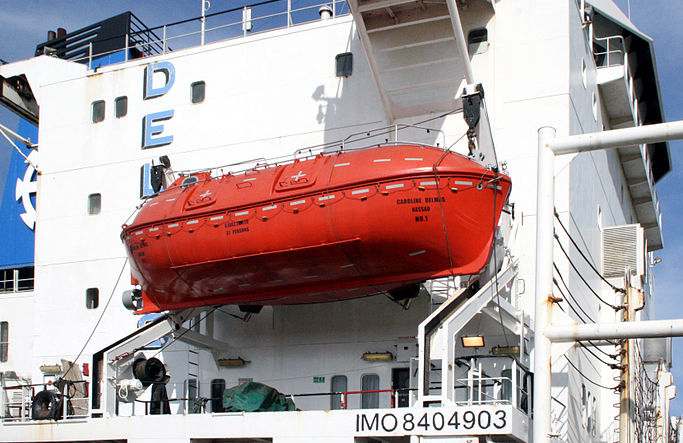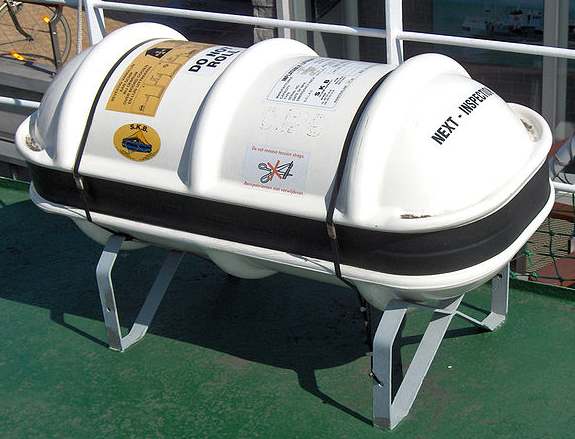|
LIFEBOATS and EMERGENCY LIFE PRESERVATION EQUIPMENT at SEA
|
||
|
Last of the lifeboats to be safely launched from RMS Titanic 15 April 1912
A lifeboat is a small, rigid or inflatable boat carried for emergency evacuation in the event of a disaster aboard a ship. Lifeboat drills are required by law on larger commercial ships. Rafts (liferafts) are also used. In the military, a lifeboat may double as a whaleboat, dinghy, or gig. The ship's tenders of cruise ships often double as lifeboats. Recreational sailors usually carry inflatable life rafts, though a few prefer small proactive lifeboats that are unsinkable and can be sailed to safety.
Swanage lifeboat is launched using a dedicated slipway
Ship-launched lifeboats are lowered from davits on a ship's deck, and are unsinkable in normal circumstances. The cover serves as protection from sun, wind and rain, can be used to collect rainwater, and is normally made of a reflective or fluorescent material that is highly visible. Lifeboats have oars, flares and mirrors for signaling, first aid supplies, and food and water for several days. Some lifeboats are more capably equipped to permit self-rescue, with supplies such as a
radio, an engine and sail, heater, navigational equipment, solar water stills, rainwater catchments and fishing equipment.
LINKS & REFERENCE
http://en.wikipedia.org/wiki/Lifeboat_ethics http://en.wikipedia.org/wiki/Lifeboat_%28rescue%29 http://en.wikipedia.org/wiki/Lifeboat_%28shipboard%29 http://www.lusitania.net http://www.lusitania.net/lastrestingplace.htm http://www.history.navy.mil/wars/korea/minewar.htm hhttp://en.wikipedia.org/wiki/HMHS_Britannic hhttp://en.wikipedia.org/wiki/HMHS_Britannic http://en.wikipedia.org/wiki/Admiralty_Mining_Establishment http://en.wikipedia.org/wiki/Naval_mine http://www.enterprise-europe-scotland.com/sct/news/?newsid=4306
|
||
|
This
website is Copyright © 2016 Bluebird Marine Systems
Limited.
The names Bluebird,
RiverVax™,
SeaNet™,
SeaVax™,
Miss Ocean™ and the blue bird in flight
|


